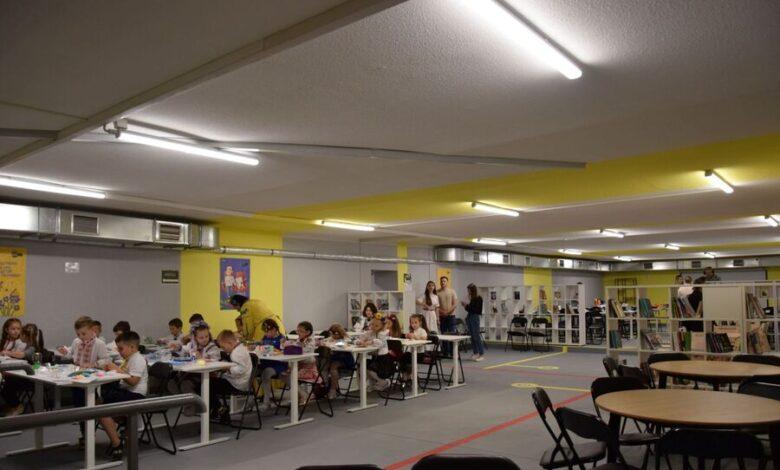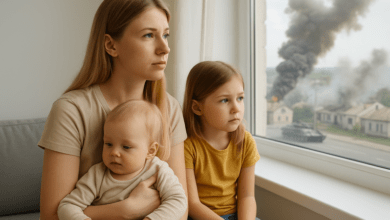The Cabinet of Ministers additionally allocated funds for shelters in general secondary education institutions

With the beginning of the full-scale Russian invasion of Ukraine, the education system faced unprecedented challenges. The issue of the continuity of the educational process can no longer be considered separately from the issue of physical safety of children, teachers and staff of educational institutions. Instead of the usual discussions about updating textbooks or reforming the school curriculum, quite basic but critically important things came to the fore: whether the school has a shelter, whether the walls will withstand an air strike, whether the class will have time to descend to a safe room during an air raid. In such conditions, any educational policy inevitably contains an infrastructural, security component.
Allocation of funds for shelter in educational institutions
On April 18, 2025, the Cabinet of Ministers of Ukraine adopted a decision that continues this line: the government allocated 829 million 245,663 thousand hryvnias for the arrangement of shelters in general secondary education institutions. The amount will be part of a larger program that has been in place for more than two years and aims to create minimally safe conditions for children to learn in wartime.
About the adopted decision reported representative of the government in the Verkhovna Rada, Taras Melnychuk. According to him, the amount of subvention from the state budget has been allocated to local budgets for the implementation of a public investment project to provide safe conditions in institutions that provide general secondary education. We are talking not only about general education schools, but also about institutions with a military profile – naval lyceums, military sports educational institutions, lyceums with enhanced military physical training.
A limited range of territories will receive funding. Specifically, 15 communities, as well as the regional budgets of three regions — Kherson, Zaporizhzhya, and Khmelnytskyi. As noted in the government, priority in financing is determined by the degree of proximity to the zone of active hostilities, as well as the general infrastructure situation in the regions. These are communities where offline learning is possible or potentially possible, but without shelters, leaving children in classrooms means a systemic risk to life.
At the same time, Prime Minister Denys Shmyhal confirmed that during the two years of the war, the government invested a record 14 billion hryvnias in school security. This includes the construction and modernization of protective structures, the arrangement of premises that meet the norms of civil protection, the provision of ventilation, emergency lighting, means of communication and basic comfort for children who are forced to stay in shelter for hours during long air raids.
The peculiarity of the current subvention is that it directly concerns 2025. That is, the government is already planning educational infrastructure ahead of time, taking into account that the war will continue for some time. The project envisages not just the construction of new shelters, but a complex increase in the level of security in already operating schools. Part of the funds will be used to refurbish existing premises, and part will be used to complete or reconstruct protective structures.
State subvention, despite the formal terminology, is an instrument of direct intervention in the situation. Without financial support from the center, most communities, especially in the frontline and liberated areas, would not be able to provide their schools with even basic means of protection. In many cases, the sites lack not only an equipped shelter, but also any room that could be converted to meet the needs of evacuation during an alarm. That is why state funding is not just monetary, but strategic: it is a guarantee that education can at least partially return to the face-to-face format.
It is worth mentioning that the educational process in Ukraine since the beginning of the full-scale war takes place in three main formats: online, mixed and face-to-face – only if there are shelters. More than 80% of schools in the country operate in a hybrid or online form, and only those educational institutions that have storage are allowed to study offline. Thus, each new shelter is a real opportunity to return children to classes, to live communication with peers and teachers, to an educational environment that forms not only knowledge, but also social skills and a sense of security.
Which educational institutions will receive funding
Among the projects approved by the government to provide safe conditions in schools, two new objects that will be implemented in military lyceums received special attention. In particular, a new shelter will be built at the Zaporizhia Regional Lyceum with enhanced military training “Defender” with state funding in the amount of 82.4 million hryvnias. In the Kamianets-Podilsky Lyceum with enhanced military and physical training, a similar object involves the allocation of 13.1 million hryvnias. Both projects aim to create safe learning conditions in institutions where physical load, special training profile and risks associated with geographical location require special attention from the state.
In addition to the new facilities, part of the subvention is directed to the completion of the shelters, the construction of which was started as early as 2024, but at the time of the funding update, the level of their readiness was less than 40%. These are buildings that were of strategic importance, but due to lack of funds or logistical problems were not completed in the previous period.
The geography of funding distribution covers eight regions of Ukraine. In particular, two projects are planned in Dnipropetrovsk region, one in Zaporizhia, two in Mykolaiv, four in Odesa, six projects will be implemented in Kharkiv region, two in Kherson, one in Khmelnytskyi, and three in Chernihiv. The regional distribution takes into account not only the needs of educational infrastructure, but also the level of security risks relevant for each region.
All projects that received funding were evaluated in accordance with the Risk Assessment Methodology in the Education System. These are criteria that take into account the level of threat to the life and health of children and staff, the frequency of air alarms, the state of school infrastructure, proximity to the front line, and the availability of evacuation routes. Each facility was submitted for approval through the DREAM digital platform, a government system that provides a transparent submission, selection, monitoring and reporting process. It is through this platform that control over the effectiveness of the use of funds and compliance with project deadlines is carried out.
This is already the third decision of the government in 2025 within the framework of implementation of the state subvention for shelter in educational institutions. The total budget of the program in 2025 is a record 6.2 billion hryvnias. In the previous stages, the financing of 60 new projects was approved, as well as the completion of another 27 objects, which at the time of submission had a degree of readiness of more than 40%.
The implementation of this block of projects is a continuation of the target policy of the state, aimed at gradually covering the maximum number of educational institutions with protective infrastructure, regardless of their type, subordination or location. Taking into account the risks that remain high in most of the territory of Ukraine, shelters cease to be an additional component — they become a prerequisite for the restoration of a full-fledged school life.
An education system that teaches in shelters is a reality today. But at the same time, it is also a system that forms a new generation of Ukrainians: hardy, prudent, able to adapt and consciously act in extreme conditions. And these characteristics, unfortunately, are not a side effect, but a direct result of the experience that Ukrainian schoolchildren are currently experiencing.





